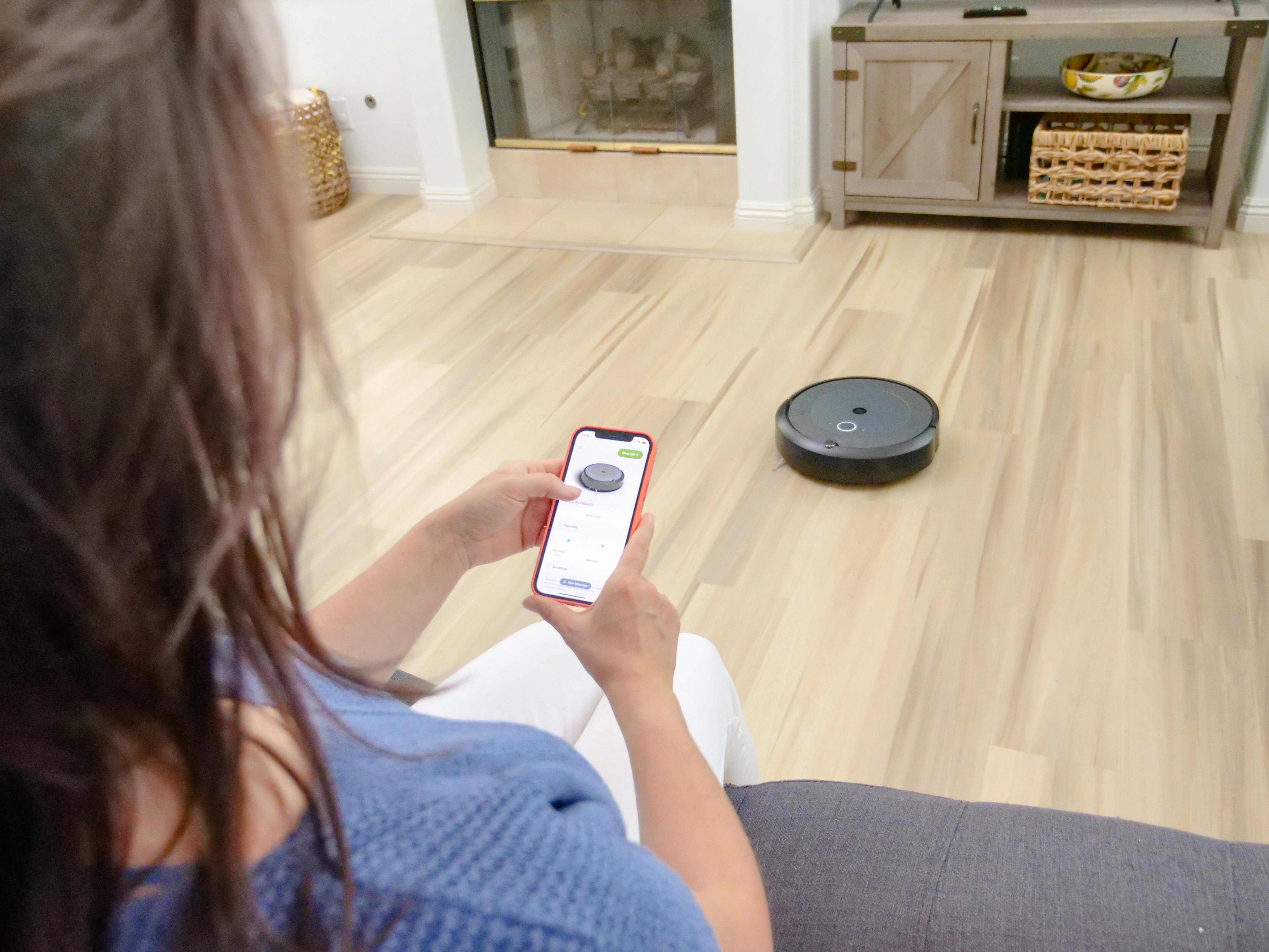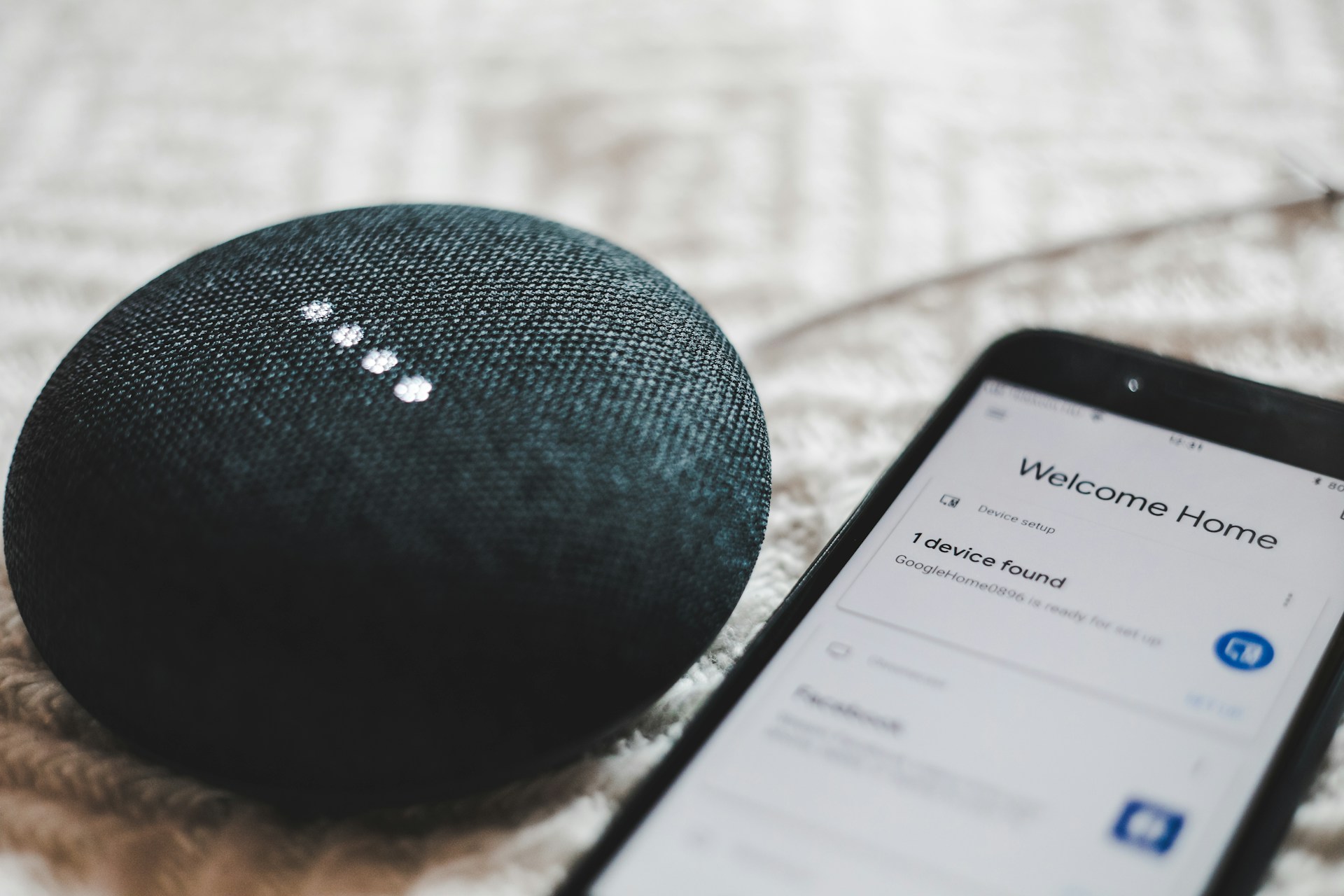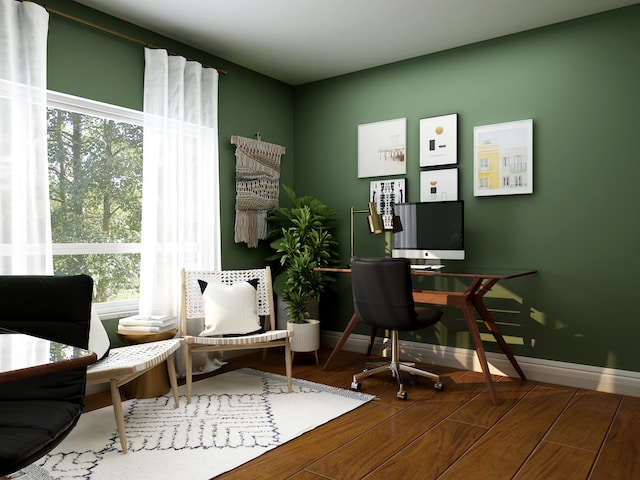Smart home technology is changing how we interact with our living spaces, offering modern solutions to virtually every modern problem. Automated home security systems or smart cleaning devices are reshaping our daily routines. But the impact of smart technology goes beyond convenience. It’s also revolutionizing the insurance industry, offering homeowners new ways to protect their properties, design living spaces, and reduce costs. It doesn’t matter if you’re tech-savvy or just beginning to explore these devices; understanding the connection between smart technology for your home could lead to smarter decisions and potential savings. In this article, we asked a few experts for their insights on how technology revolutionizes your home and how it impacts your insurance.
Home automation systems
Smart home technology connects various devices—thermostats, lighting systems, security cameras, and appliances—to the internet, allowing homeowners to control them remotely via smartphones or voice-activated assistants.
Smart home security is one of the most known parts of home technology. Smart locks, cameras, and alarm systems provide real-time monitoring and alerts, allowing homeowners to monitor their property anywhere. Innovative cleaning technology, like robot vacuums and automated mops, has made maintaining a clean home easier.
Tips from the experts
What are the key features to look for in a home security camera system for optimal home protection?
“When selecting a home security camera system for optimal protection, consider the following key features:
- High Resolution: Look for cameras with at least 1080p resolution to ensure clear and detailed video footage, making it easier to identify faces and other critical details.
- Night Vision: Ensure the system has good night vision capabilities, typically with infrared LEDs, to monitor your property effectively in low light or complete darkness.
- Wide-Angle Lens: Cameras with wide-angle lenses provide broader coverage, reducing the number of cameras needed to monitor large areas.
- Motion Detection: Advanced motion detection can trigger alerts and start recording when movement is detected, helping to conserve storage and notify you of potential intruders.
- Two-Way Audio: This feature allows you to communicate with anyone on your property, which can be useful for deterring intruders or talking to visitors.
- Storage Options: Consider systems offering both cloud storage and local storage options, such as microSD cards or network video recorders (NVRs), for redundancy and data security.
- Smart Home Integration: Compatibility with smart home devices and systems (like Amazon Alexa or Google Home) allows for seamless integration and control of your security system.
- Weatherproofing: For outdoor cameras, ensure they are weatherproof with an IP rating (like IP65 or higher) to withstand various weather conditions.
- Mobile App Access: A user-friendly mobile app allows you to monitor your camera feeds in real-time, receive alerts, and manage settings remotely.
- Power Options: Check if the cameras offer flexible power options, such as battery-powered, wired, or solar-powered, to suit your installation preferences.
These features enhance the effectiveness of a home security camera system, providing clients with protection and peace of mind.”
Peter Semkowski from Auxe Inc.
How can smart home technology enhance the effectiveness of my home security system?
Smart home technology significantly improves the efficiency of home security systems by including advanced functions such as human body and vehicle detection in smart security cameras. These systems use AI-powered motion detection to distinguish between people, and vehicles. This lowers false alarms and ensures that households receive accurate alerts when there is a genuine hazard. Some smart cameras can even recognize faces, and match the face to known persons in a cloud based database specific for your home. Smart cameras can send push alerts to your phone if an unfamiliar person is detected. They can also be paired with other smart devices such as alarms and lighting to provide round the clock automated security that responds to possible threats in real time, making your home protection smarter and more efficient.
Ray Ansari from CCTV Camera World Inc
What is the one thing I can do to protect my home devices from getting hacked?
When it comes to preventing your home devices from getting hacked, securing your email accounts is crucial. Many people don’t realize that their smart home devices can be compromised through email phishing attacks that target their user accounts. The number one thing you can do to protect your home devices is to enable multi-factor authentication (MFA) on your email accounts. MFA adds an extra layer of security by requiring a second form of verification, making it much harder for hackers to gain access even if they have your password. Implementing cloud email security can further enhance your protection by filtering out phishing attempts and ensuring your email accounts are well-defended against cyber threats. Common vulnerabilities include weak passwords, outdated software, and default usernames and passwords that come with the devices. By regularly updating your passwords and firmware, and by changing default settings, you can better safeguard your home technology against cyber threats.
Dave Wreski from Guardian Digital
What steps can homeowners take to secure their smart speakers against unauthorized access?
“The number one thing I always recommend is having layers of security when trying to keep items in your home secure. For a smart speaker, it is imperative to have multi-factor authentication (also called Two Factor Authentication / 2FA) enabled. When you enable 2FA you reduce the risk if your password is somehow compromised. This also prevents cyber criminals from using a brute force attack where they literally automate the process and guess millions of password combinations every second until they hit the actual password. Other common sense areas that are often overlooked are making sure you change the default username and password that comes with the device.
Also, remember your secure devices are only as secure as you set up your home WiFi network, so don’t forget to create a long and strong password for both the smart speaker and your WiFi Network. Finally, you should not put off updating any security patches that may be available from time to time, as these will protect you from the latest vulnerabilities.”
Scott Schober, Pres/CEO of BVS, Cyber Expert, Host of Cybercrime Magazine, Author
How can renters protect their homes with smart tech that doesn’t require permanent installation?
“If you want to protect your home as a renter, consider portable devices like cameras and smart sensors. Here are some great options that aren’t permanent:
- Smart Security Systems: Systems like SimpliSafe or Cove Security have cameras and sensors that can be placed indoors or outdoors without drilling. Methods like double-sided sticky tape can provide a secure hold while being wall-friendly. And with a mobile app, you can manage it from pretty much anywhere!
- Smart Doorbells: Wireless video doorbells can be installed without hardwiring, giving you a clear view of who’s at your door with real-time alerts. These doorbells can also be monitored on mobile for easy access.
- Smart Lights: Wifi-enabled lightbulbs like Hue make it easy to schedule indoor lights on and off, deterring burglars by creating the appearance that you’re home even when you’re away.
Devices like these are renter-safe, require no permanent installation, and can move with you if you find a new home.”
Chris from TenantCloud
How can smart home devices help older adults live independently for longer?
“Smart home devices are excellent tools that help make life safer and easier for older adults and give peace of mind to families.
You might first think of video-calling devices and voice-controlled speakers that play music, answer questions, and read the news. Those are great for keeping seniors connected and entertained.
In addition, smart home devices like smart plugs, thermostats, and security systems can go a long way in helping seniors live independently for longer.
Smart plugs and outlets can prevent fire hazards like accidentally leaving the stove or space heater turned on. They can also reduce fall risk by automatically turning on the lights before sunset.
Smart thermostats can be scheduled to always keep seniors at a comfortable temperature. Families can also remotely access the thermostat to monitor and adjust when needed, like during heat waves and cold snaps.
Smart security systems, including video doorbells, increase safety and allow families to monitor the home. There’s also peace of mind that authorities will be alerted if an alarm is triggered. Families can also check on older adults from anywhere, even long distance, by accessing a live camera feed to make sure they’re safe and well.”
Connie Chow, Founder, DailyCaring.com
How can mailboxes help protect against mail theft (and reduce insurance claims)?
“A secure or locking mailbox is a smart investment to protect your mail from theft and identity fraud. With strong locks, durable materials, and tamper-resistant features, these mailboxes make it difficult for thieves to access your sensitive information. Some even include anti-pry mechanisms and narrow slots, adding extra security.
Locking mailboxes safeguard important items like checks and financial statements, helping you avoid the stress and hassle of identity theft. By reducing the chances of mail theft, you might also decrease the likelihood of needing to file insurance claims, which can help maintain lower premiums.
Additionally, proper mailbox post installation according to USPS guidelines is crucial. The USPS recommends using a wooden 4″ x 4″ post or a 2″-diameter steel/aluminum pipe that will bend or give way if a vehicle hits it. This requirement could help prevent injuries and vehicle damage, reducing potential insurance claims. Avoid using unyielding materials like concrete posts, as they pose safety risks (USPS).
Investing in a secure mailbox and correctly installing it keeps your mail safe and contributes to a safer and more secure home environment.”
Jon Nabua from Budget Mailboxes
How can smart home sensors prevent spills, mold, and water damage?
“Smart home sensors help protect your home from water damage, spills, and mold. These small devices detect leaks, moisture, and changes in humidity. Placing water leak sensors near sinks, washing machines, or water heaters alerts you when they sense water. Humidity sensors track moisture levels, so if the air gets too damp, you’ll get a warning before mold can grow.
The best part is that all these sensors connect to an app on your phone. If there’s a leak or high humidity, you’ll get an instant alert, so you can react quickly and prevent damage. Some systems even shut off the water automatically when a leak is detected.
Smart sensors give you peace of mind, helping you avoid big repairs and keep your home safe.”
Lev Tretyakov from Fortador Steamers
How do smart air purifiers help improve air quality and reduce allergens in the home?
“According to the EPA, we spend about 90% of our time indoors and indoor air pollution can be two to five times higher than outdoor air. This is the result, in part to our homes being more energy efficient. Without proper ventilation or air cleaning, indoor air pollutants can build up in a home.
The allergens that cause the most issues are fine particles that float in the air as they are most likely to be breathed in. The best technology to filter them from the air is a HEPA filter. A HEPA air purifier has a fan that moves the air through the HEPA filter to clean it.
The filtration ability is in the filter and fan system. Smart air purifiers are relatively new and can provide additional ways to control the device and in some cases get basic air quality readings.
EnergyStar certifies air purifier performance through a metric called the Clean Air Delivery Rate. This simply represents the volume of clean air an air purifier can produce. Its purpose is to help compare models and choose one that will effectively clean the space. The rule of thumb is to take the square footage of your space and multiply that by 2/3 to get the required CADR. For example, a 300 sq ft room needs a minimum CADR of 200.”
Peter Mann from Oransi
How can smart cleaning devices save time and effort in maintaining a clean home?
“My motto is “Clean smarter, not harder,” and this is where my love of smart gadgets comes into play. If technology is a tool to help with the drudges of everyday life, then cleaning is its flagship drudge.
Today, devices like Roombas can tirelessly zip around your home vacuuming (and in the newest models, mopping) your floor so you don’t have to. Cleaning the floors is usually the most time-consuming chore you have in your cleaning routine. And if you can flip a switch and get that hour back, think about what you can do with it!
Gadgets like the Leebein Electric Spin Scrubber not only make it easier to clean showers and tubs but also make it safer for seniors and those with disabilities to clean.
Every day more cleaning gadgets are coming out to help make our lives easier so we can spend more time doing things we love to do. Now I’m just waiting on my Rosey the Robot.”
Sara from Confessions Of A Cleaning Lady
How can adding technology to my home make everyday life more convenient?
“Your daily life can be made more efficient, comfortable, and convenient by incorporating technology into your house. With today’s smart home systems, you can use a single app or device to manage all the features of your home, including lighting, heating, and security.
All you need to do is program your gadgets with schedules and routines. You can set your thermostat to change the temperature in your living room before you arrive home from a trip, or you can preset your lights to turn out automatically at daybreak. These for instance will not only bring comfort and convenience to you, but they are more energy efficient as they save energy and reduce your utility bills.
When you’re at work or abroad, you can receive alerts from smart security devices like motion sensors, security cameras, and video doorbells about strange activity occurring at home. Voice assistants, such as Google Assistant, Apple Siri, and Amazon Alexa, make it easy to work and complete other chores without using your hands. With voice commands, you can play music, create reminders, operate smart home devices, and acquire information.
Technology can improve your way of life and how you go about things. Smart washing machines, ovens, and refrigerators may all be operated from a distance. For example, you may check to see whether you need to replace the water filter in your refrigerator or preheat your oven while you’re on your way home. You can monitor and enhance both your home’s environment and your health with the use of gadgets like health monitors, water filters, and smart air purifiers. Robotic vacuums can reduce the time and effort required for household cleaning by cleaning your floors on a schedule and navigating past obstructions.”
Ameyaw Debrah from ameyawdebrah.com
What should I consider when deciding between a DIY home alarm system and a professionally installed one?
There are many answers on how to choose between DIY and professionally-installed home security systems on the Internet. As the manufacturer of home security system kits, I’d like to first explain why some systems require professional installation and then highlight the key factors to consider when making your choice.
Home security systems are critical for protecting your property and even ensuring the safety of your loved ones. A professional installer brings expertise and attention to detail that can make all the difference.
For example, a professional will assess various factors that could impact your system’s performance. They’ll consider whether you have pets, which may require a pet-friendly alarm system, or if there are walls, ceilings, or large metal objects that could interfere with wireless signals. They’ll also evaluate outdoor spaces to ensure that bushes, reflective surfaces, or ventilation outlets don’t compromise the effectiveness of outdoor PIR detectors.
Opting for a professionally installed system offers enhanced peace of mind, knowing that every detail has been accounted for. However, thanks to advancements in wireless technology and modern system design, some DIY systems can now offer similar reliability. For instance, Roombanker’s alarm kits feature pet-immune PIR detectors, a mobile app with a signal strength indicator for optimal placement, and control panels with Wi-Fi, Ethernet, and cellular network backups, along with a Li-ion battery for power backup. These innovations make DIY home security a viable and convenient option for many.
Key Factors to Consider When Choosing Between a DIY Home Alarm System and a Professionally-installed One
Product Range: Every home is unique, so it’s important to choose a brand with a diverse product lineup, allowing you to select devices that perfectly fit your needs.
Budget: Consider the cost of the devices, monthly service fees, and installation fees. Wireless DIY alarm kits are often more affordable, making peace of mind accessible to a broader range of homeowners and tenants. If your budget allows, it’s always best to opt for the highest quality.
Future-Proofing: Brands frequently release new products. Ensure that the system you choose can easily integrate with future upgrades.
Customer Support and Warranty: Reliable customer support and a strong warranty are crucial. Be sure to check these aspects before making your purchase.
Mia Zhao Owner of Roombanker Alarm System
How does smart home technology contribute to environmental sustainability in addition to enhancing home security?
In addition to bolstering security, the use of smart home technology plays a significant role in promoting environmental sustainability. For example, smart thermostats can adapt to your daily routines, optimizing heating and cooling to minimize energy consumption. Furthermore, automated lighting systems ensure that lights are activated only when necessary, leading to substantial electricity savings. By implementing these technologies, homeowners can reduce their carbon footprint and may even qualify for insurance discounts due to lower risks associated with energy use and property damage.
Techie Loops
Home insurance and smart homes
Integrating intelligent devices in homes is bringing about significant changes that benefit homeowners and insurers alike. Here is how these advancements are reshaping the landscape of home insurance.
- Beyond convenience: Smart home technology offers more than just ease of use for homeowners, it can lead to tangible financial benefits by lowering insurance premiums.
- Insurance discounts: Homes equipped with smart security systems may be eligible for discounts on insurance premiums, thanks to the reduced risk of theft, damage, or other incidents that could lead to a claim.
- Preventing costly damages: Devices like leak detectors are crucial in avoiding expensive home repairs. They can alert homeowners to potential water leaks early on, preventing issues like flooding or mold growth before they become major problems.
- Incentivizing safer homes: Insurance companies are offering incentives for adopting smart home technology, encouraging more homeowners to invest in these systems. This trend is leading to safer living environments overall.
- Enhancing liability claims: Security and doorbell cameras can provide clear evidence in cases of theft or injury, while smart sensors can document specific events, like the exact time and location of a water leak.
- Streamlining the claims process: The data provided by smart home devices can help speed up the insurance claims process by offering solid proof to support the homeowner’s case, ensuring quicker resolutions and fair compensation.

For homeowners, smart device integration means a more connected and efficient living space and the potential for an eco-friendly lifestyle. It offers an opportunity for reduced insurance costs and simplified claims processes. Luckily, insurance companies recognize the value of these technologies and are increasingly offering incentives to homeowners that reward proactive protection. By using smart home technology, you’re upgrading your lifestyle.




